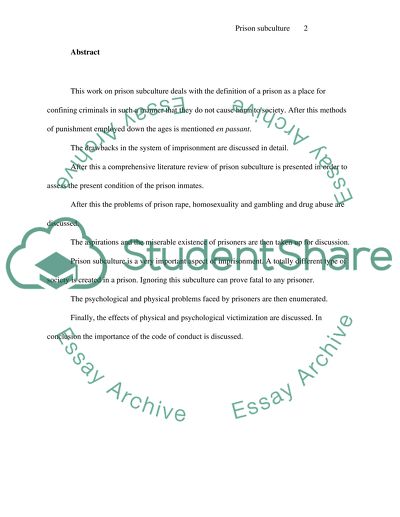Cite this document
(“Prison Subculture Essay Example | Topics and Well Written Essays - 3250 words”, n.d.)
Retrieved from https://studentshare.org/sociology/1537751-prison-subculture
Retrieved from https://studentshare.org/sociology/1537751-prison-subculture
(Prison Subculture Essay Example | Topics and Well Written Essays - 3250 Words)
https://studentshare.org/sociology/1537751-prison-subculture.
https://studentshare.org/sociology/1537751-prison-subculture.
“Prison Subculture Essay Example | Topics and Well Written Essays - 3250 Words”, n.d. https://studentshare.org/sociology/1537751-prison-subculture.


